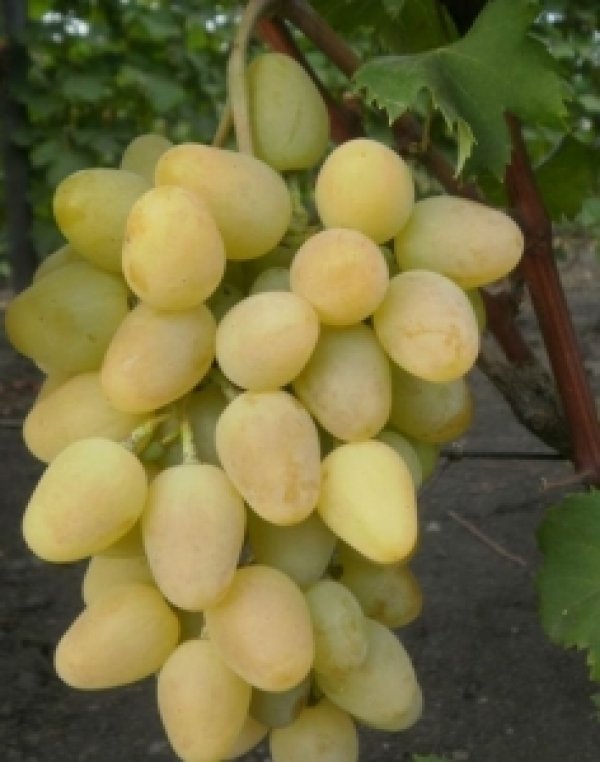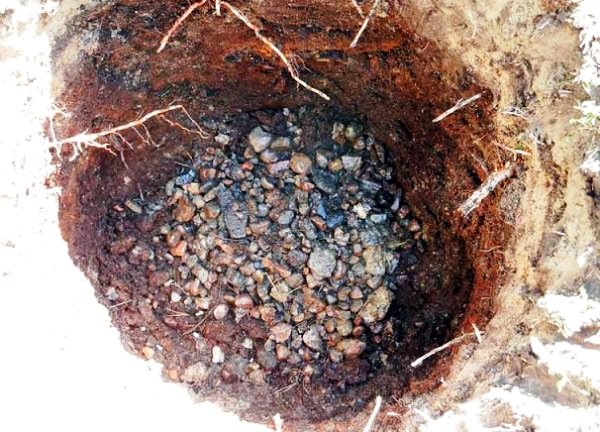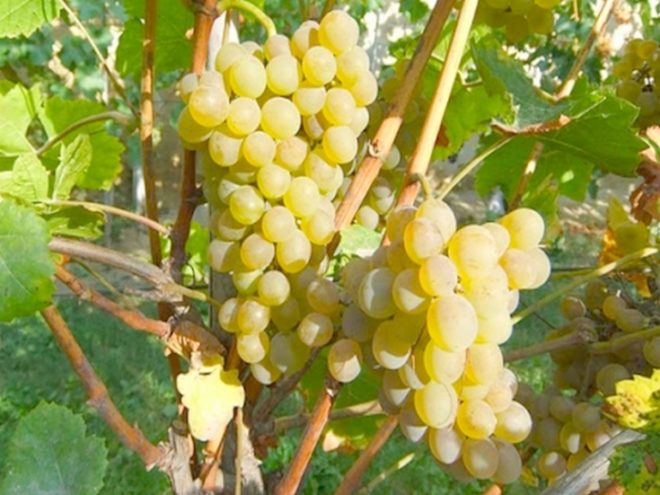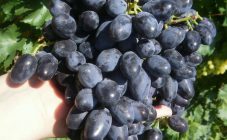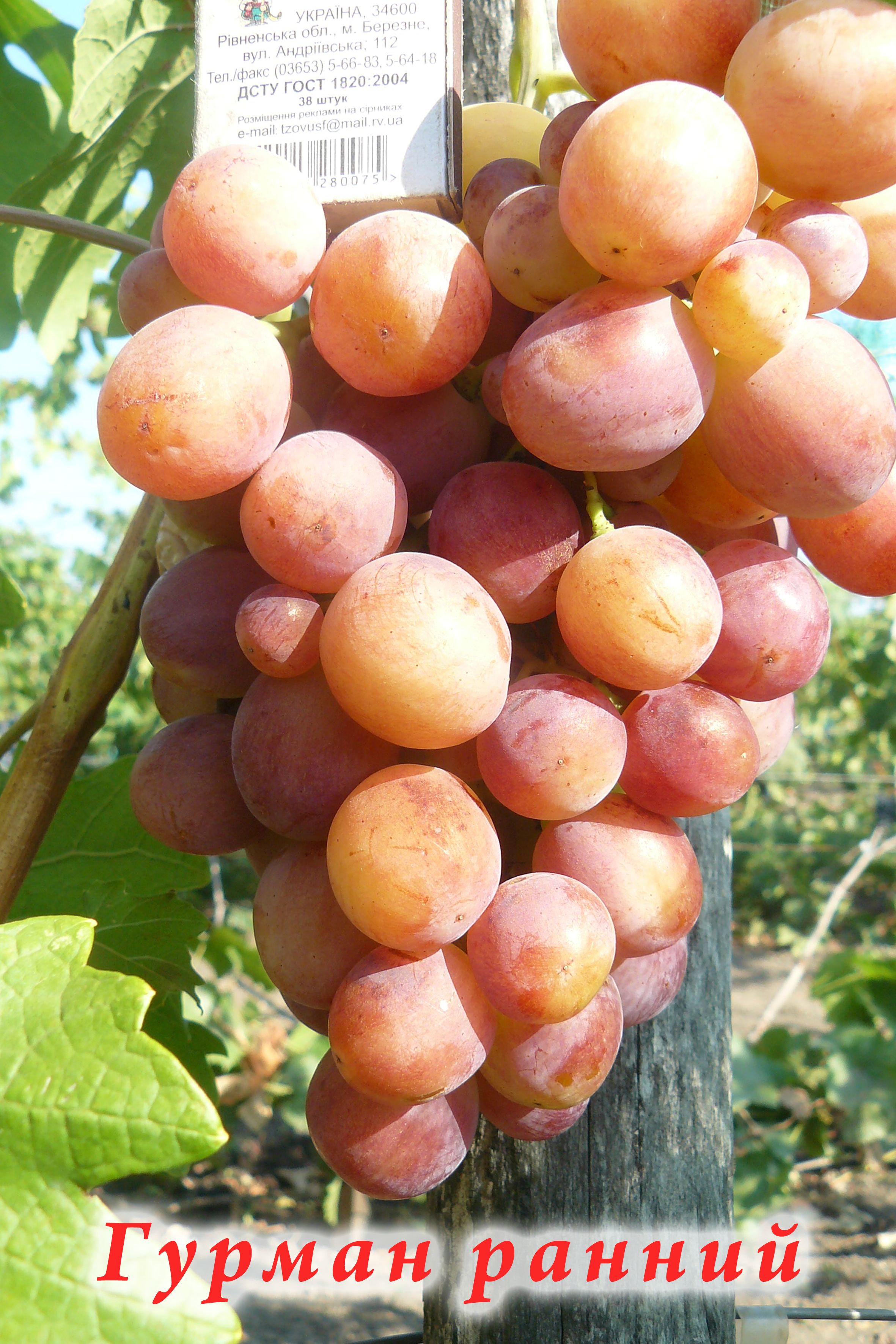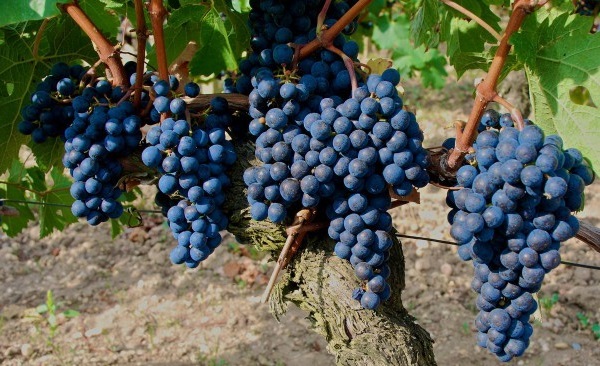Content:
Today grapes have ceased to be a curiosity in summer cottages in the Moscow region and more northern regions. A competent choice of varieties allows you to get a harvest in your garden and please your loved ones with the taste and benefits of juicy berries. Gardeners especially liked varieties with large or medium tassels, which will decorate any table. One of them was the Monarch grape.
Description of the Monarch grape variety
Monarch is a table variety of Russian selection, created by Evgeny Pavlovsky, who has been collaborating with the V.I. Potapenko. The breeder created more than 40 varieties by vaccination, one of which was the Monarch. Two varietal varieties were selected for breeding - Talisman and Cardinal. As a result, the Monarch adopted the frost-resistant qualities of the Talisman and combined the taste characteristics of the ancestors.
The following features are worth noting:
- A vigorous bush 2.5-3 m high with 1.4 m long shoots.
- Refers to medium early varieties, the growing season is 120-140 days.
- It has bisexual flowers capable of self-pollination.
- Fruiting lasts about a month.
- The mass of brushes can reach 1 kg, their average weight is 500-600 g.
- Excellent frost resistance (does not freeze at temperatures down to -25 ° C).
- The variety is characterized by high resistance to mildew and gray rot, weakly resistant to powdery mildew.
This grape is characterized by large oval or egg-shaped berries, each weighing 22-35 g and up to 35 mm in size. The skin of ripe grapes is of medium density, has a light yellow color with a slight "blush". The pulp is juicy, fleshy, rich in sugar content (up to 18%). Perceptible nutmeg notes are revealed in the taste, thanks to which Monarch is actively used in wine business. The content of seeds is almost imperceptible, in each berry there are 2-3 of them. The bones themselves are not large. Mass ripening occurs in mid-August.
Correct agricultural technique
It is better to split a vineyard on a plot from the south side, near the building. The walls of the house will protect the vine from the cold and wind.
A dense hedge can also protect the bush on the north side. Clay soil and wetlands are not suitable for growing grapes. The substrate should be light, with moderate moisture.
If the summer is dry and hot, Monarch grapes require systematic moisture. Drip irrigation is perfect for him. It is necessary to water the vine only until the ovaries are formed, in the future, long roots will independently extract water from the deep layers of the soil.
It is recommended to loosen the soil after watering. Loosening is useful during the entire spring and summer season. The retention of moisture in the ground is well promoted by mulching with humus, it also serves as a source of nutrition.Mineral dressings are applied every 2-3 weeks, paying attention to the increased content of phosphorus and potassium. As a prophylaxis of powdery mildew and other diseases for Monarch grapes, periodic spraying with Bordeaux liquid is used.
Pruning guidelines
Due to complaints from growers about shedding of especially large inflorescences, the developer of the Pavlovsky variety paid attention to this aspect and noted that most often this phenomenon occurred on "fattening" bushes. Therefore, the breeder recommended normalizing pruning of branches in the summer (at the stage of pea formation). Also, you should not allow the vine to grow too massive, it is better to leave thinner shoots. Cardinal pruning is best done at rest.
When pruning bushes, experienced growers are advised to leave up to 35 eyes. The optimal load for one bush will be 24 shoots. Leaving more branches will have a negative impact on yield indicators.
If the winters in the region are warm enough, the soil under the bushes is simply mulched with sawdust. In frosts from -25 ° C before wintering, the bushes are cut off, laid on the ground and covered with dry grass, leaves or spruce branches. A film is put over such a shelter and fixed well.
Landing rules
When planting this grape variety, no special conditions are required. If you plant grapes as a seedling, it is important to choose the right one. The plant should have light roots and a green cut. The planting hole must be dug to a depth of 90 cm, after which drainage and rotted manure mixed with the ground are laid on the bottom.
The seedling is placed vertically in the pit, with the roots straightened out.
After planting, the bush is watered abundantly, the earth is mulched. The best time to plant is spring. Over the summer, the grapes will get stronger and will well endure wintering.
For reproduction by grafting, a strong stalk with 3 eyes is used, pre-soaked in water for a day. The top cut is dipped in molten paraffin to retain moisture. When preparing the stock, a 10 cm stump is left, which is split in half, then the prepared scion is inserted into the stock. The grafting site is tightly wrapped with a piece of cloth, the plant is abundantly watered and mulched.
Garter to the trellis
Since the variety is tall, it needs a garter to support it. This grape is best suited for a two-plane trellis, consisting of two vertical supports connected to each other at the top. This design allows the branches to be positioned so that the foliage receives the maximum amount of sun.
At the same time, the airflow rate of the bush improves, which has a positive effect on pollination and reduces the risk of fungal diseases. From 4 to 12 sleeves are formed on such a trellis, which increases the yield of the crop. The amount of fertilizer applied should be directly related to the number of fruiting branches.
Advantages and disadvantages of the variety
Gardeners do not just appreciate the Monarch grape variety. Preference is given to him because of its many advantages:
- good survival rate by grafting and seedlings;
- the ability to self-pollinate (the variety can be planted in greenhouses);
- resistance to frequent "grape" diseases;
- excellent transportability;
- long shelf life;
- high yield rate;
- large size of berries;
- lack of tendency to pea;
- pleasant aroma and taste;
- during the rains, the berries do not rot and do not crack;
- high frost resistance.
Disadvantages include only massive shedding of ovaries and weak resistance to powdery mildew. The first problem can be easily avoided by planting in a windless location and properly rationing pruning.In order not to face the second disadvantage of the variety, one should not neglect the preventive treatments of the vineyard.
